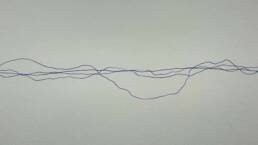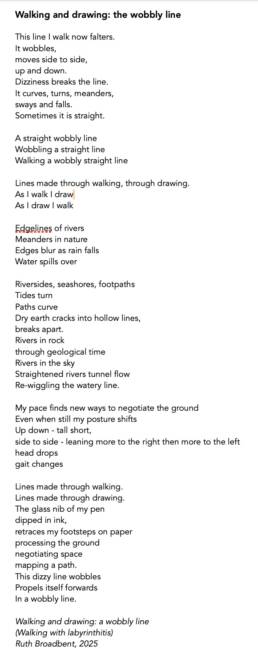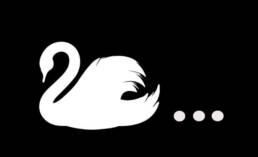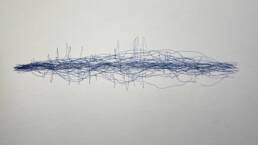
Walking and Drawing: A Wobbly Line
Walking and drawing a wobbly line for The Fourth World Congress of Psychogeography (4WCoP 2025)
On Saturday 11 October, I’ll be in Swansea for The Fourth World Congress of Psychogeography (4WCoP). In case any of you are in the area and might be interested in going, tickets can be booked on Eventbrite here.
There will be a day of events from talks to walking activities. In the morning session, I’ll be presenting a new work, Walking and Drawing: A Wobbly Line, a short video of drawing and words.
This is how I described this work to the 4WCoP team earlier this year:
“After walking and drawing tracks and lines for years, this line I now walk falters and wobbles, moves side to side, up and down. How do I negotiate this new way of propelling myself forwards and creatively, visually, articulate the movements of dizziness?”
‘After that, this:’
As soon as I saw the theme for this year’s 4WCoP, ‘After that, this:’, I felt a resonance with my own situation in negotiating change, so decided to make a work in response to this. The making of this work has deepened my reflections on these wobbly lines in, across and through landscapes; how they move and shift over time, weave a clear line or spill over the edges. Like the elements of earth, air, fire and water, as things change we find new ways to negotiate space and propel ourselves forward, even if the line is, at times, blurred or wobbly.
Walking with dizziness
With this work, I attempted to explore and visually express how dizziness from labyrinthitis made the line wobble, falter, fall, sway diagonally or side to side. A different kind of line, though still attempting to propel itself forwards. Walking with dizziness has fortunately now subsided, though the lines I walk still meander, just in a different way.
As I walked in wobbly lines, I wondered how others negotiate walking with dizziness and what their walked lines would look like. I began to try and draw these movements, from swaying whilst sitting still, to walking in wobbly lines across fields. The making of these drawings had an element of mapping to them as I tried to transcribe these movements from place to place on the paper. The action of drawing these lines of movement reminded me of Paul Klee’s words, “A line is a dot that went for a walk”.
When walking with dizziness, open outdoor spaces are easier for me to negotiate than urban or indoors, or narrow streets and buildings with lots of turns. A path across a field is gently wobbly so I can find a point of focus, although a sudden turn into dark woodland or a shift to bumpy ground can mean stumbling and falling as the quick transition of light and space are hard to process.
There is a feeling within my body as if the line goes up into the air like walking on stilts, then dropping down to being very short, pulling me down close to the ground. As it moves up and down, the line is tall, short, and occasionally my body height. It’s more a feeling that I’m moving, the ground itself isn’t moving.
This feeling of movement goes beyond when I am walking. My body sways as I sit still, side to side, diagonally, up and down. These movement are in a clear continuous line back and forth in different directions. They do not spin.
After a journey that involves some element of speed, such as by car or train, I feel dizzy when I try to stand up at the end of the journey. Walking becomes more of a stumble and a need to sit down until it subsides. Bending down or a sudden change in direction, climbing the stairs or turning along a corridor, are challenging too. The dizziness and wobbliness never lets up, it is a constant companion. Even trying to process information is not a straightforward task. Over the years, I have discovered that I am not alone in responding this way or experiencing this.

The making of: materials and process
The end result of this drawing is less about producing a ‘finished image’ and more about trying to show the wiggles, the falls, the messiness of walking whilst dizzy, the stumblings, the ‘un-neatness’ of trying to follow a line.
I thought about a larger work, made in the landscape, with charcoal on paper, or collage, or stitched. In the end I decided to keep the line simple, overlaying it into one small and portable drawing. It was made with a glass pen which I bought in Verona, Italy. I love drawing lines with this pen – it holds the ink better than any other dip pen I have used. Also, I bought the pen in Italy which is where I became dizzy, back in February, triggering labyrinthitis which I had hoped had gone for good after experiencing it in the past. I like the links between glass, silica, sand. It makes me think of the sea and beaches, of ground and water. Just before visiting this area of Italy, I had read Tracy Chevalier, The Glassmaker, which vividly brought to life the world of glassmaking, the material of glass, its history and personal stories over time.
I considered adding sound, possibly mixing up sounds from my video for 4WCoP24. I wondered whether or not the persistent and repetitive coo of pigeons could contrast with other sounds that might suggest dizziness or undizziness. Failing to answer this question, and what each sound suggested, I decided not to add a soundtrack this year but to focus on word and image instead. The question itself though still intrigues me of how we associate different sounds with movement.

This is an accidental companion piece to my walking drawing for last year’s 4WCoP, with the straight line walked last year contrasting with this year’s wobbly lines. In previous years for this congress, I have also made companion pieces, drawing and walking a line towards the sun and subsequently towards the moon. Although each work can standalone, each of these works together trace a period of time and responses to different places and ideas.
Wobbly lines in the landscape
Inevitably my thoughts wandered to other lines that wobble and meander. For years I’ve worked with line, researched line, walked tracks and lines, made drawings and sculpture around line. These have varied from imagined lines to lines in and across landscapes.
I reflected on lines in landscapes both earthy and watery. I’ve been immersed in books on water this year and have spent a lot of time thinking about drawing water (read more on this here).
I was reminded of how Dilip Da Cunha describes how a river is not a line drawn on a map but is wetness as water spills from above and below, over the edges. From Amy Jane Beer writing about rivers in the sky to Robin Wall Kimmerer describing mist in rainforests, or Robert Macfarlane describing every human as a waterbody, my reading took me on a journey through watery landscapes.
“Water flows in and through us. Running, we are rivers. Seated, we are pools… We were swimmers before we were walkers, …” (Macfarlane, 2025: p16).
As an aside, for anyone interested in line, if you haven’t already read it, Tim Ingold’s book, Lines: A Brief History (2016) still remains one of my favourite books on line. Also, the exhibition, On Line (MoMA, 2010-11) showed a huge range of works around line within the expanded field of drawing.
These meandering, wobbling, curving and turning lines repeat themselves as I walk, along footpaths, follow the course of a river, or the tideline of the seashore. I was particularly conscious of these lines when seeing the straightened canals and ‘cuts’ around the natural wiggles of watercourses in Norfolk this summer, a human intervention which is now in many cases being adapted or even reversed as we learn more about the effects of our actions on water and the landscape.
Even looking at cracks in the dry earth of a field or a rock surface made me think about broken, staggered, interconnected lines. Last week I took my lunch to a field close to home to sit on a tree stump I know well – the perfect spot for an hour’s break and a change of scene. I noticed a clear line across the field, passing just behind the tree stump. It curved around and across the field, heading in the direction of the stream, probably made by sheep. I don’t specifically set out to make work about line but somehow it always draws me in, offering a constant source of inspiration. It therefore didn’t surprise me when in searching for a way to express walking with dizziness, I turned to line. Although my focus for ‘After that, this:’ is on the wobbly line within the context of walking and our environment, navigating such lines unsteadily can also have further resonances and contexts.

Read more on my previous works for 4WCoP:
Walking a Line: Encounters Through Drawing (A walk for 4WCoP 2024)
A Line Towards The Moon: Walking a Line: Encounters Through Drawing (A sensory engagement with the ground) 2023
A Line Towards The Sun: Walking a Line: Encounters Through Drawing (A sensory engagement with the ground) 2022
Attend 4WCoP 2025:
If you’d like to hear about all the 4WCoP2025 projects, you can sign up here for the free in-person event in Swansea on Saturday 11 October.
Find out more about The Fourth World Congress of Psychogeography on their website here.
#4WCoP2025
and finally, look out for 5WCoP events starting on Sunday
Many thanks to the team at 4WCoP for inviting me to present my work at this year’s congress.


